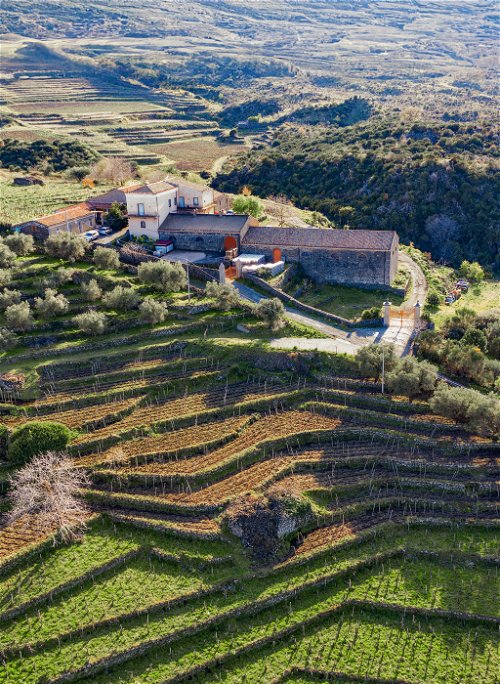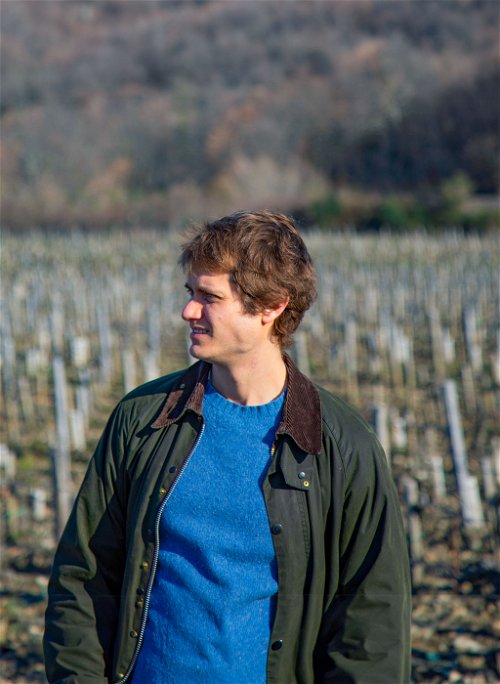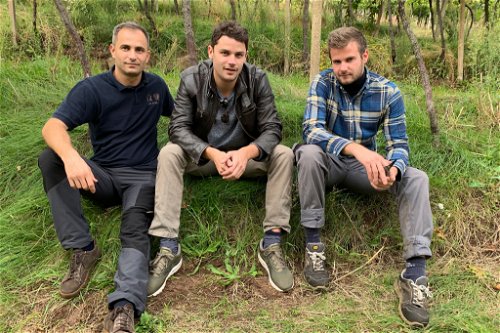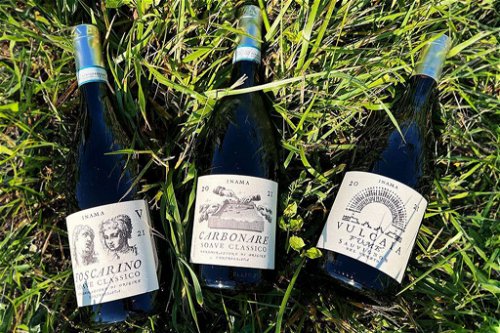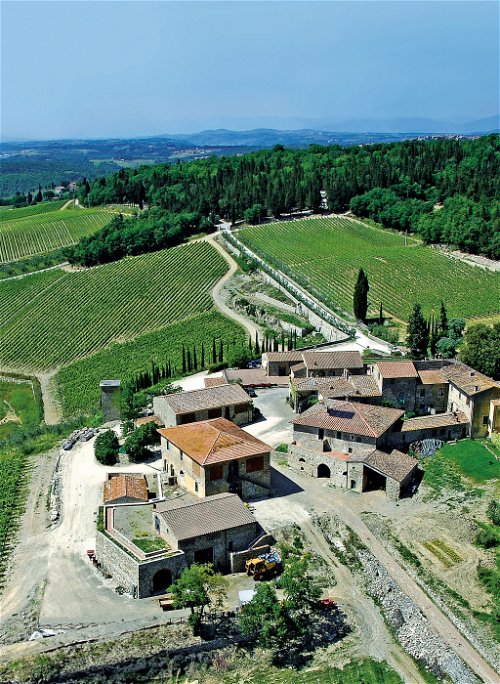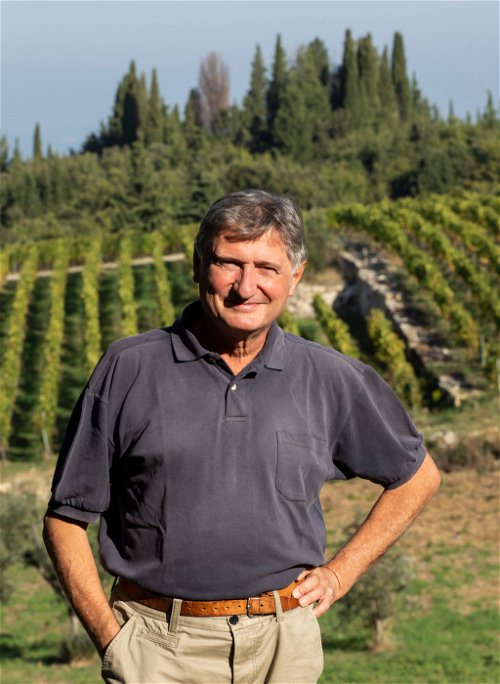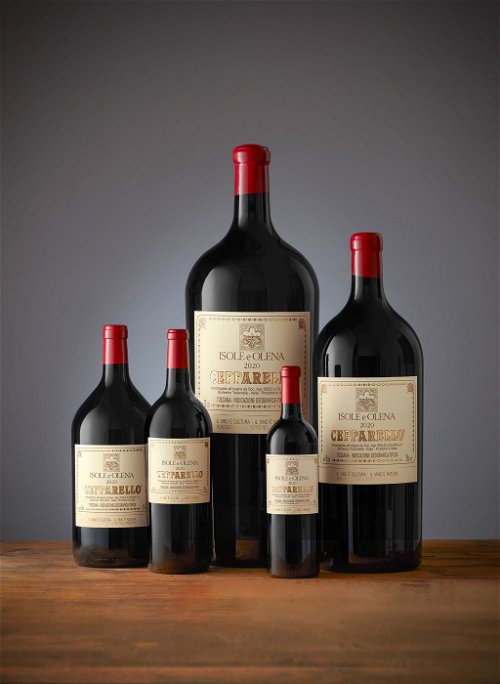Wine Guide 2024: The Best Wines of Italy
Italy's best wineries and wines - from sparkling to white, rosé, red and sweet - are presented, interesting facts about the individual wine-growing regions are explained, and impressive landscape photographs from all over Italy are shown - from South Tyrol to Sicily, from Friuli to Piemont. Winner portraits and selected gourmet destinations in the DACH region round off the overall work.
What you hold in your hands is the result of an entire wine year. We spend a good 200 days a year on the road in Italian wine-growing regions, visiting old acquaintances, tasting new wines, but also constantly on the lookout for new discoveries. Curiosity is one of our biggest driving forces: where is there a new farm to know about, where is there a new wine, which winegrowing regions are rising, which are falling? For the Falstaff Wine Guide Italy, a highly competent tasting team then tastes the wines in our tasting room over several weeks.
The result is in front of you. Next to France, Italy is the leading wine producing country in Europe. Wine and viticulture have a millennia-old tradition in Italy. Wine is produced in all 20 regions of the country, from South Tyrol to Sicily, from Friuli to Piedmont.
Thanks to modern cooling technology and accurate work in the vineyard, probably the greatest leap in quality has taken place there. Burnt or defective wines hardly exist anymore, even white wines from southern climes inspire with their clarity and freshness. A megatrend that runs across all regions is the increasing attention to finesse, juiciness and complexity. Gone are the days when Italian red wines impressed with sheer power and richness. One is reminded again of a highly important element of wine; the drinkability. Wine should be drunk first and foremost as an accompaniment to food, and that's where it should taste good.
Another big trend is the meteoric rise of sparkling wine. Thanks to Prosecco, Italy has become the world's largest producer of sparkling wine. But even outside the world of Prosecco, there is no wine-growing region left in Italy that does not produce sparkling wine. Consumers love the freshness and fine sparkle, they also love the fact that sparkling wines are lighter in alcohol. Whether in classic bottle fermentation or tank fermentation, Italy offers a wide range of fine sparkling wines.
Keyword: diversity; it is enormous in Italy. From South Tyrol to Pantelleria, there are diverse climatic zones, from near the sea to the many altitude zones up in the hills and mountains, in addition to the choice of different grape varieties, the different soils and vintages. Take advantage of this diversity and let yourself experience wines from a lesser-known wine-growing region or a lesser-known variety.
407 selected wineries are represented in this guide, and we tasted over 2,300 wines from the current vintages. This was mastered with the competent help of an extended tasting team consisting of long-time sommeliers and wine professionals. We would like to thank them all once again.
With this Falstaff Wine Guide Italy we have created a tool that offers the reader a profound overview of the current range of Italian wines and is a reliable guide to the various wine-growing regions. We hope you enjoy reading this guide and likewise when buying wine.
- The best red wines
- The best white wines
- The best rosé wines
- The best sparkling wines
- The best sweet wines
- Variety winner South Tyrol
Collection of the Year
Passopisciaro Castiglione di Sicilia, Sicily
In the late 1990s, Andrea Franchetti visited the Etna wine regions for the first time and was fascinated. Twenty years earlier, Franchetti had founded the Tenuta di Trinoro winery in southern Tuscany and wowed the world with its wines. The altitude - on Etna, viticulture is practiced at altitudes ranging from 400 to over 1,000 metres, the climate - warm, even hot during the day, very cool at night, the varieties - Nerello Mascalese with the Reds, and white Carricante, and the diversity of the soils presented Andrea Franchetti with an exciting challenge.
Above the village of Passopisciaro, at a lofty altitude of 800 metres, he found a house where he set up his winery. The old Alberello vines were revitalised, new vineyards were planted. In addition to Nerello Mascalese, Franchetti also planted Chardonnay, Petit Verdot and some Cesanese d'Affile, which he knew from his native Rome. Gradually he also became familiar with the peculiarities of the sites, called "contrade" on Etna. Due to the various volcanic eruptions and the corresponding lava flows, there can often be several million years of age difference between the soils of one Contrada and the other. This and the microclimate make the wines often very different from one site to another.
At the beginning, Andreas Franchetti produced only two wines at Passipisicaro, Passorosso and Passobianco. From the 2008 vintage also appeared the Contrade wines of Passopisciaro, five in total: Rampante (R), Sciaranuova (S), Guardiola(G), Porcaria (P) and Chiappemacine (C). All are produced from the same variety of Nerello Mascalese, come from the same vintage - 2021 turned out excellent on Etna - and are processed in the same way in the cellar; nevertheless, the differences between the individual sites are strikingly apparent. To this is added the Contrada PC, a polished, multilayered Chardonnay. Chiappemacine is a small vineyard at 550 metres and therefore the lowest. At the other extreme we have Rampante, where the vines climb to over 1,000 meters. Guardiola are the sites around the cellar, at altitudes between 800 and 1,000 meters. Sciaranuova is located at about 850 metres above sea level, Porcaria 200 metres lower. Around the winery are also two small vineyards of Petit Verdot and Cesanese d'Afile.
To continue my father's work on Etna is for me a task, a challenge and a great joy!
- Benjamin Franchetti
This gives rise to Franchetti; completely different from the fragrant red wines based on Nerello, with marked acidity and tannin. Nevertheless, the fruitiness and polish of Etna wines are also expressed in the Franchetti. The entire collection of Passopisciaro inspires with its clarity and precision. 2021 was Andrea Franchetti's last vintage. He died in December of the same year. Vincenzo Lo Mauro was active at Passopisciaro from the beginning. Furthermore, the warm-hearted Sicilian had once introduced Franchetti to the peculiarities of Etna. Vincenzo Lo Mauro now runs the winery together with Benjamin Franchetti, Andrea's son. The two of them and the entire team guarantee that we will continue to enjoy wonderful wines from Passopisciaro in the years to come.
Newcomer of the Year
Inama, San Bonifacio, Veneto
Admittedly, the Inama winery is not really new. The winery in San Bonifacio has existed for 3 generations. Giuseppe Inama founded it in the 1960s. Son Stefano Inama took over the business in the early 1990s. With his Soave, the Sauvignon Vulcaia Fumè and the red wine Bradisismo he earned wide recognition. But it was with the arrival of the third generation, Stefano's sons Matteo, Luca and Alessio, that the project really came off. The three Inama brothers act like a creative volcano, bubbling over with new ideas and projects. The Inama triumvirate, always assisted by father Stefano, initially focused its efforts on Soave. The Inamas own about 30 hectares of vineyards in the Soave growing area, all in prime hillside locations, all appearing as Soave Classico. From Foscarino and Carbonare come two excellent site wines. Then, three years ago, the Soave Classico I Palchi was produced. A "Super Soave" so to speak, I Palchi is made from the grapes of old Garganega vines on Monte Foscarino.
The next step was to sharpen the red wine profile. Stefano Inama had already discovered the Colli Berici wine-growing area east of Saove as a red wine region in the mid-1990s. In the Colli Berici, wines made from French red grape varieties have been grown for over 150 years: Gamay, locally called Tai, Cabernet Franc, Merlot and Carménère. The latter is a variant of Cabernet, characterised by pronounced spicy tones. In Bordeaux this old variety is now extinct, is found much in Chile and just also in the Colli Berici. Stefano Inama dreamed of making a great red wine from Carménère.
Thanks to the preparatory work of grandfather Giuseppe and father Stefano, I can now really get started with my brothers Luca and Alessio.
- Matteo Inama
Matteo, Luca and Alessio Inama are now putting this dream into practice. They summarise the principles of their work in three memorable points: 1) The growing region, not the grape variety, shapes the wine. In the Soave area viticulture has been practiced since Roman times. The Inamas are convinced that in such a traditional area, one should not rely only on the expression of the variety. It is the expression of the territory that gives the wines complexity and characteristics that go beyond the pure varietal character. 2) Nature and its preservation determines all work in the vineyard. 3) Only constant improvement and the implementation of new knowledge leads to top quality. The areas in the Colli Berici are now the same size as those in Soave. An ultra-premium wine from the Colli Berici will be released next spring. It is simply called "Capital"; the first vintage is 2021. It is composed of 85% Carménère and 15% Cabernet Franc. Only 1,500 bottles are produced. In initial tastings, the wine showed itself to be extremely elegant and refined, with a memorable character. We are convinced that we can expect many more great wines from the Inama brothers in the coming years.
Lifework
Paolo de Marchi, Barberino, Tuscany
Paolo De Marchi set milestones. In the 1970s, the Piedmont native took over his family's then-neglected winery in Barberino, in the Chianti Classico area. The name Isole e Olena comes from the two hamlets that make up the farm. On Isole is the winery, on Olena should be a hotel. A plan that was then dropped, however. In the years following Paolo De Marchi's entry no stone was left unturned at Isole; he reduced the yield of the existing vineyards, planted new vines and increased the cane density from the then standard 2,500 to 6-10,000 per hectare.
In collaboration with universities, Paolo searched for the most suitable planting material for the new vineyards. While the neighbours all around levelled all the terrain faults in order to make the work in the vineyard easier to mechanize, he revived old stone terraces and had new ones built. Not only the flora and fauna in the vineyard benefited from this. Paolo De Marchi experimented with different clones, different containers, from the traditional large wooden barrel to the barrique and was not afraid to try new closing methods. In 1980 he created his Supertuscan Cepparello. While many others relied heavily on Cabernet etc. in those years, Cepparello made a clear statement as a single-varietal Sangiovese. For many who followed, the Cepparello became a reference point, as it still is today. A reference point for many is also the "simple" Chianti Classico from Isole e Olena. Besides Sangiovese, this always contains a small amount of Syrah, of which Paolo de Marchi is very convinced as a junior partner to Sangiovese. Paolo De Marchi's love is undeniably Sangiovese. But this did not prevent him from experimenting with Chardonnay, Cabernet Sauvignon and Syrah.
The wines from these three varieties are marketed in small quantities under the label "Collezione Privata" and are among the best of what is available in Italy. De Marchi's latest creation is a formidable Chianti Classico Gran Selezione. Initially, Paolo was somewhat reserved about this top category for Chianti Classico, created in 2013. However, he did not miss the opportunity to impressively show everyone with his creation where Gran Selezione was headed.
Sangiovese is where my heart lies. Over the past decades, we have been able to make outstanding progress with this variety.
- Paolo de Marchi
Paolo De Marchi is now over seventy; the number of uncles, aunts, siblings, nieces and nephews is large. One of his sons, Luca, runs the Proprietà Sperino winery in Lessona in northern Piedmont. Unfortunately, the other members of the widespread families don't have much to do with wine. In 2022, Isole e Olena was therefore sold to the French Epi Group. The Epi Group has already proven with Biondi Santi in Montalcino that it has a very good hand with traditional Italian quality wineries. Paulo de Marchi continues to be responsible for the entire production of Isole e Olena, guaranteeing continuity. He will continue to serve the winery as a consultant even after he retires from operations. It is with great pleasure that we present our award this year to Paolo De Marchi for his remarkable life's work!

